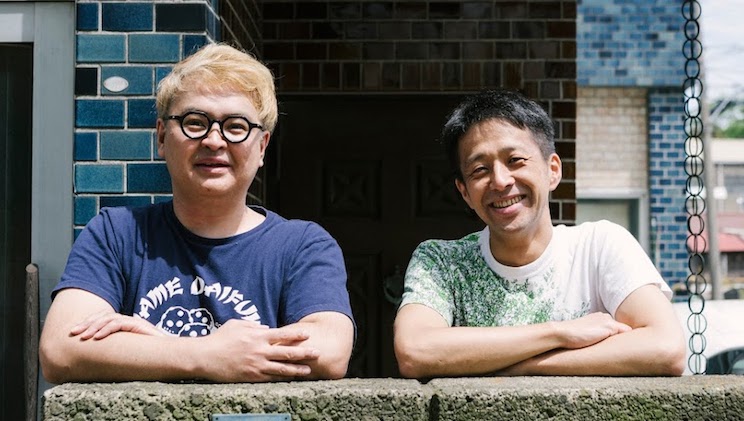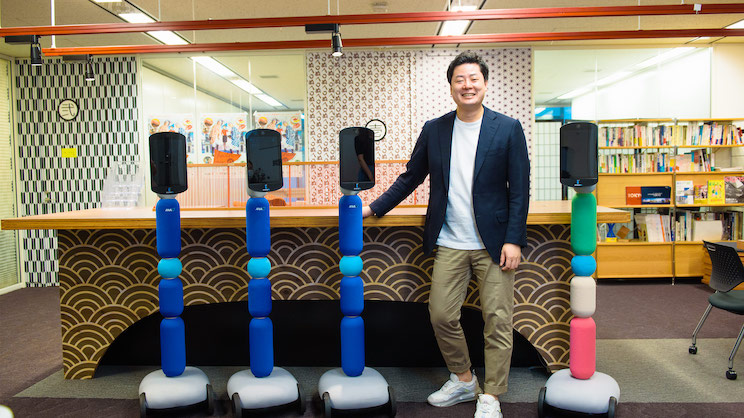Thorough Analysis of Work at the “Weird Electronics Shop Shiftall” [Part One]
Thorough Analysis of Work at the “Weird Electronics Shop Shiftall” [Part One]

Shiftall announced its automatic craft beer filling service DrinkShift at CES2019, a consumer electronic showcase held this January in the US. After hearing that the company has some tricks for creating an organization that churns out cutting-edge products, we decided to visit their office in Bakurocho, Nihonbashi for an interview. We spoke with the Executive Officer Yuki Kai and the CEO Takuma Iwasa on the particularities of their DIY office, advice for building communication, and more.
A Weird Electronics Shop” Delivering
Cutting-Edge Products Packed With Surprises to the World.
-First of all, could you tell us what kind of company Shiftall is?
Iwasa: Right, it’s an electronics shop.
-But we heard that you were a company that develops cutting-edge IoT products (laughs).
Iwasa: That, of course, is true as well (laughs). It’s just that the products we work on are generally electronics, so we end up calling ourselves an “electronics shop”. What sets us apart from other electronics manufacturers would be that the electronics we develop always contain a “surprise” made with advanced technology.

-What, specifically, is that?
Iwasa: An easy example would be DrinkShift, a refrigerator we unveiled at CES2019, the largest consumer electronics show in the world held the other day in the US. This is a special refrigerator for craft beer that has a built in mechanism to order beer automatically when it runs out and deliver it to your home. This special refrigerator is synced with a smartphone app that can automatically determine the amount of beer remaining in the fridge as well as the user’s drinking pace. Your favorite beer arrives at the perfect timing. The refrigerator itself is stylishly designed based on the assumption that it would be placed in the living room or a study. We’re considering subscription (continuous billing system) billing based on usage.
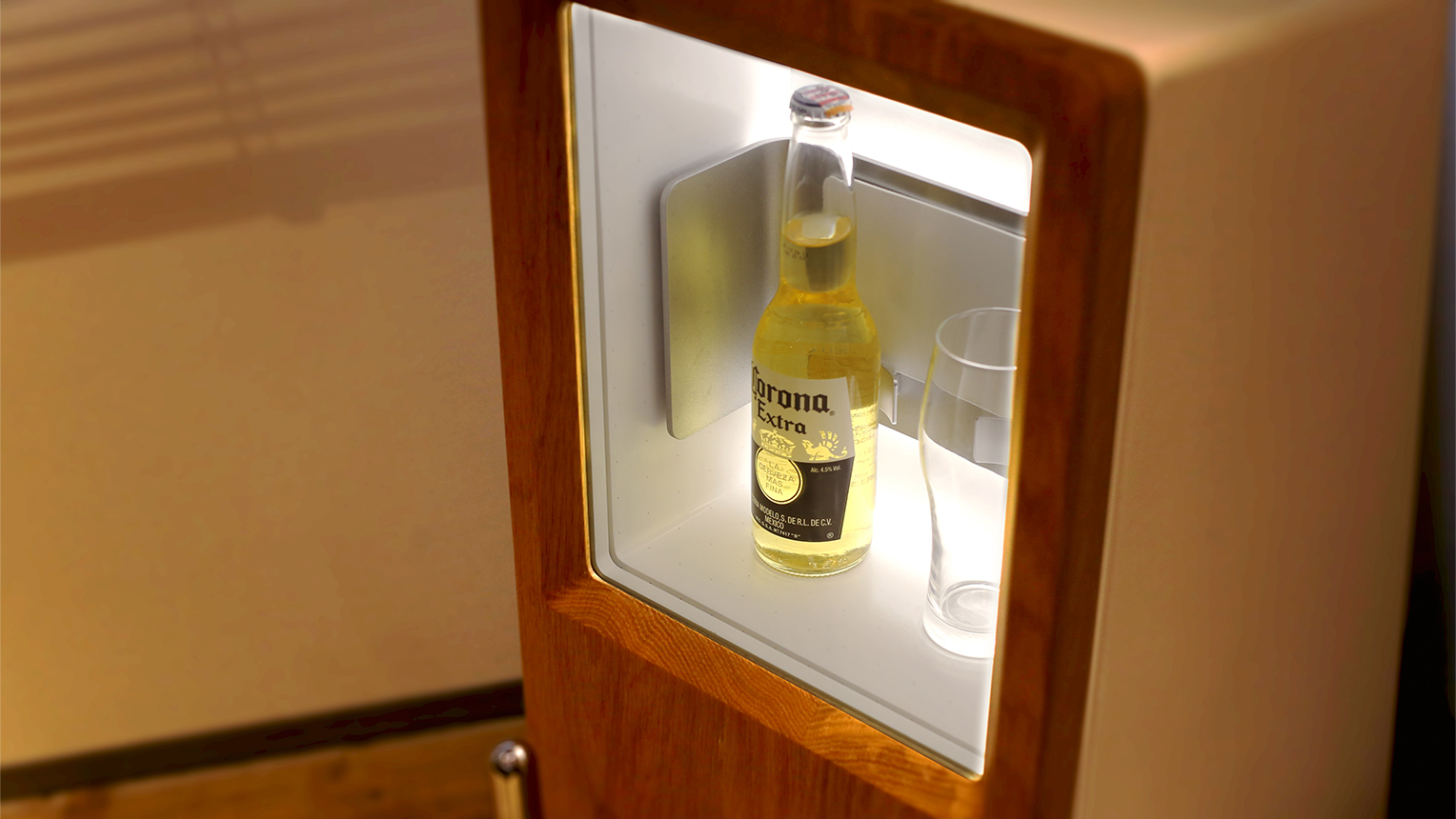
DrinkShift, a refrigerator that scans beer consumption rate and delivers beer to your home at the perfect timing.
Kai: The surprise that we talked about before is that this is not just a refrigerator, but that it includes a mechanism for ordering beer automatically, providing total service. Something else we are working on is WEAR SPACE, planned and designed by Panasonic, a wearable headphone-type product that creates your own space for concentration in the present wherever you are in the world. This is hardware featuring covers for either side of the face so that the user can focus on work, study, or music. This is a composition including a large partition that limits the field of vision to noise-cancelling headphones.
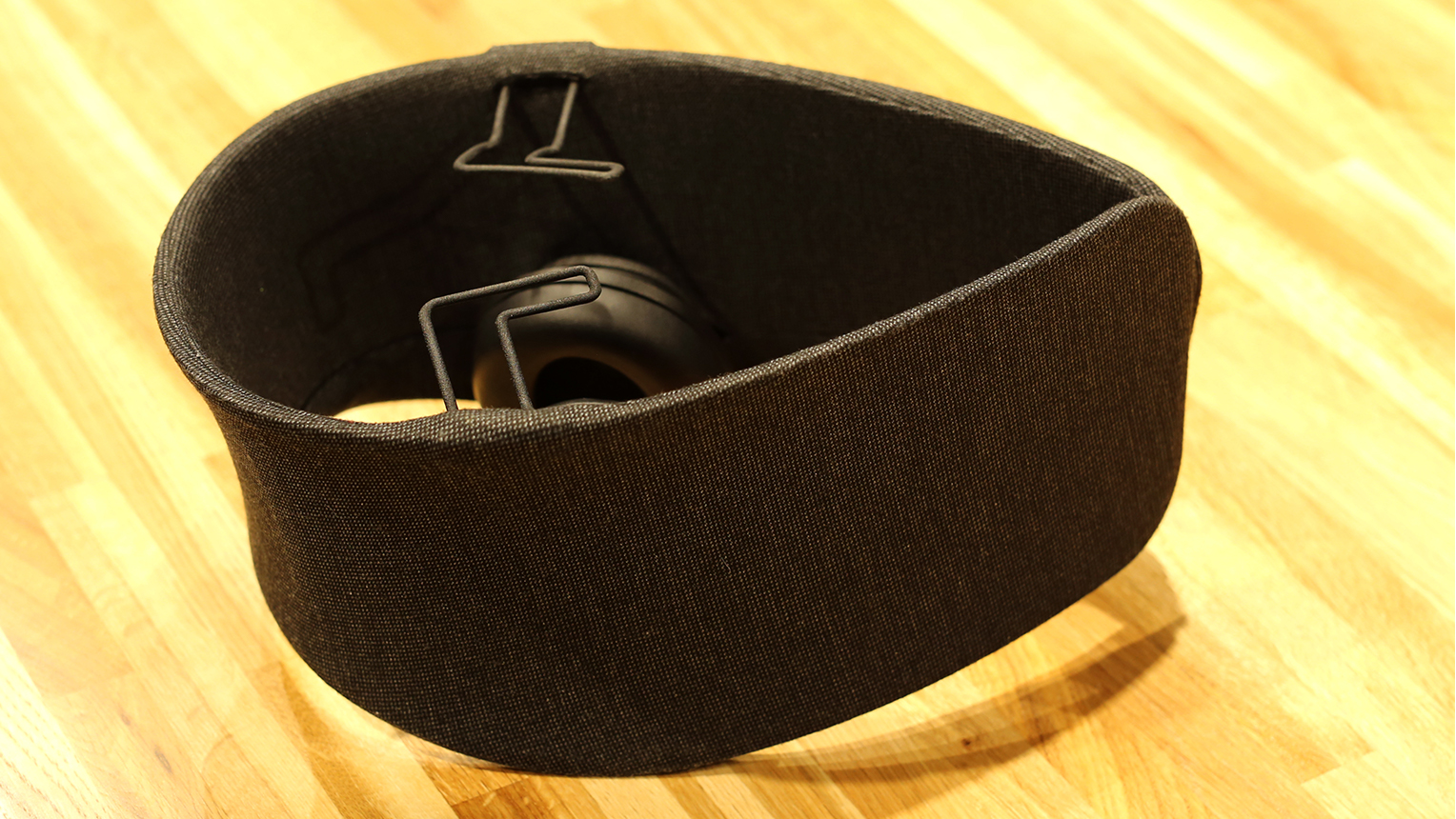
WEAR SPACE, a product that creates a boundary while in an open space to create your own personal psychological space.
Iwasa: Since we develop things like this, I think the easiest way to describe ourselves is to say we’re a high-tech electronics shop, or maybe a weird electronics shop. Saying we make electronics makes it easier to communicate details afterwards. For people not involved in the IT industry, there’s a lot of confusing topics and jargon, and once you say you work in IT, they think, “I probably won’t understand anything that’s coming next!” and they put up a little wall. But if we say electronics, well those are things like fans, refrigerators, TVs, microwaves, vacuum cleaners, things everyone knows, so they’ll engage in a conversation.
Products with unusual qualities
will spread throughout society and sell.
-The mechanism and appearance certainly are surprising, or have impact.
Iwasa: I believe that the element of surprise is essential in all aspects of life, and our products embody this. People often say we are good at PR, and I think the reason for that lies in this. Product development is closely linked to PR, and if there is the element of surprise, it hooks people and gets them talking about your product. The “element of surprise” and “becoming a trending topic” go together hand in hand. And the opposite, that products without the element of surprise cannot be sold on PR alone is also true. That’s why we consciously develop products that incorporate the element of surprise, which makes PR easy.
-So you put a pinch of the element of surprise into every product?
Iwasa: No, I think just a pinch of surprise wouldn’t be enough. For example, if I showed DrinkShift to my parents living in the countryside, they’d never say, “Oh, what a cool refrigerator!”. I’m certain the first thing they’d say would be, “What on earth is this?”. This is the first element of surprise. What we’re really committed to is making things that you aren’t really sure what they are but still find them interesting. Then, when they actually open the door, everyone grins. “Oh, it’s a beer refrigerator!” they say, amused. This is the second element of surprise. Then, when I finally tell them about the invisible technology system that delivers beer to your home before the stock in the fridge runs out, everyone, regardless of age, gender, or nationality, is astonished. This is the third element of surprise.
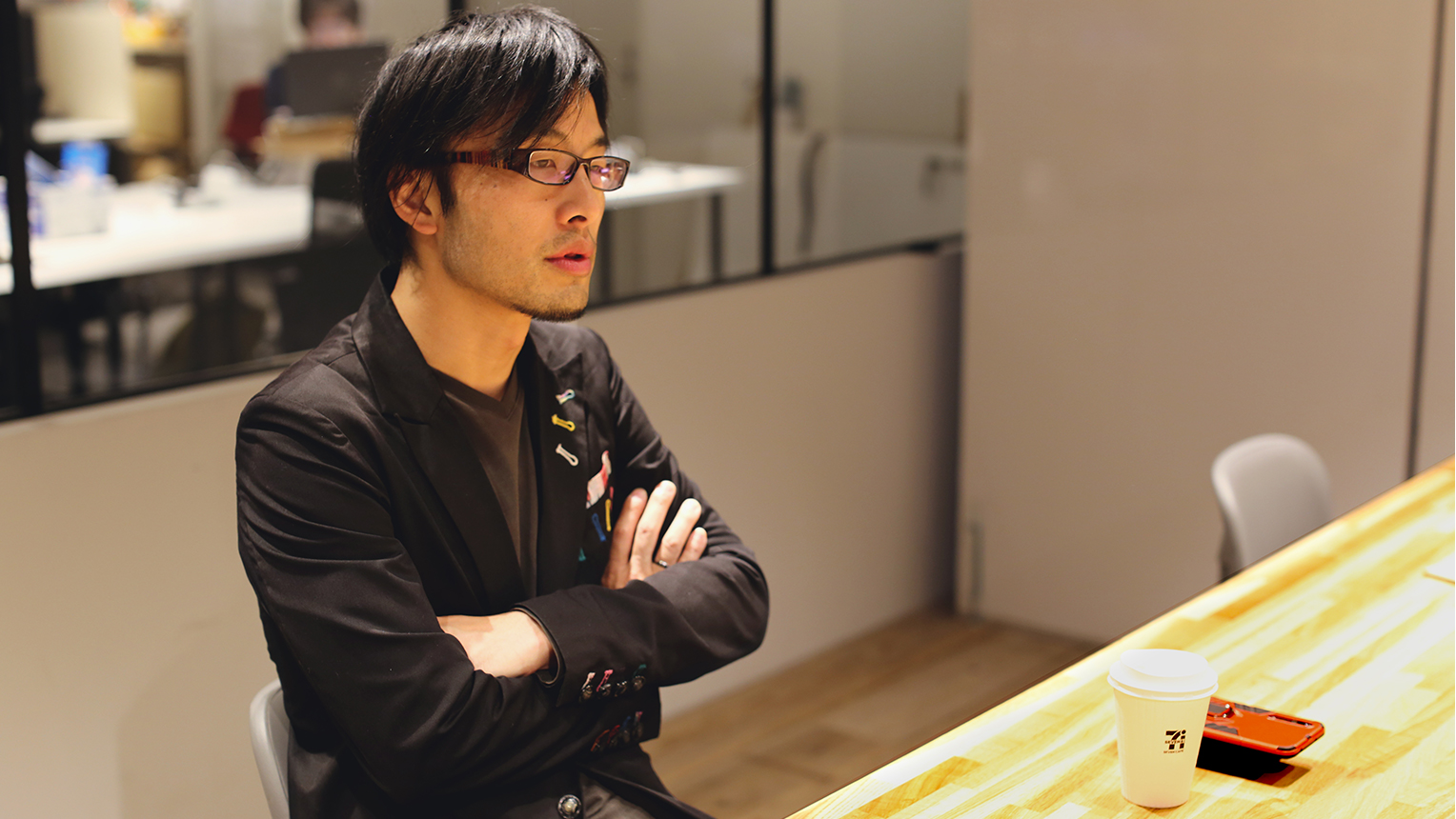
-So it’s not only about a surprise you can see, but about a variety of hidden surprises?
Iwasa: I think a certain hidden “what’s this” is much better than a surprise you can see through right away.
Kai: If the product includes many elements of surprise, people will naturally talk about it, making it known throughout society. This could be applied to product or service development in any field, wouldn’t it? Some companies have a strong sales force,some have strong advertising or publicity, and I think that is totally fine. What we are good at at Shiftall is incorporating the element of surprise into our products to make them well-known.
New Products Born From Mist?!The Presentation at the Annual CES as the Source of Innovation.
-When developing products at Shiftall, how many ideas do you come up wth?
Iwasa: I think we come up with less ideas than everyone thinks we do. In the world of advertising, it’s not uncommon to make three trial products for every one hundred or more ideas, then narrow it down to one final. It’s exactly the same with logo design. For us, however, we make about 1.5 prototypes for every five ideas, then from there release about one product. But before those five ideas there are countless vague images, like particles of mist, that cannot really be called ideas, which are then turned into five ideas, and later narrowed down to one. The final narrowing down is done together with our employees.
-Could you tell us a little more about this “mist” part?
Iwasa: In my case, I have a file for product ideas that I usually update while I’m on an airplane. I only write very abstract things there, so the file for DrinkShift just includes one-liners such as, “There’s many things that get refilled when they run out”, and “not paper or water”. These couldn’t even really be called a single idea. So after that, we come up with five ideas, like should it be water? Should it be beer? Should it be ink cartridges? The thinking process often flows like this.
-Do you sometimes get ideas from your staff?
Iwasa: We do. Sometimes they give us ideas on site. Coming up with ideas together raises motivation among team members and is more persuasive. It used to be more common for just one person to decide, but we’re trying this way now.
-Is there anything else that you do when you are cognizant of your team members?
Iwasa: Right. CES, the event where we announced DrinkShift, is held once a year, and so presenting the new product there has served as motivation for our members to innovate. When we make CES the goal to work for, even when it’s finished, it creates an atmosphere of, “We have to make something for it next year as well”. Regular events that make people think, “The season has come!” are quite important. While there are many other interesting events besides CES, right now the market and the Japanese media focus overwhelmingly on CES and this is also where we target our interest.
Technology has a high affinity
for well-established, traditional industries.
-Incidentally, why was Bakurocho chosen as the Shiftall location?
Iwasa: There are two reasons, the first being that it is close to Akihabara. Akihabara is a special place for manufacturing companies like ours, not just only a meaningful place where you can buy a lot of electronic parts, but also a place where you can interact with cutting edge electronics and gadgets at any time. The fact that we’re within ten to fifteen minutes from Akihabara Electric Town is huge. The other reason is that it is easy to get to both Narita and Haneda Airport.
Kai: We’re always working overseas, so being able to go to either Narita or Haneda makes this location convenient. Being able to use either Haneda or Narita depending on time and airfare is a huge advantage.
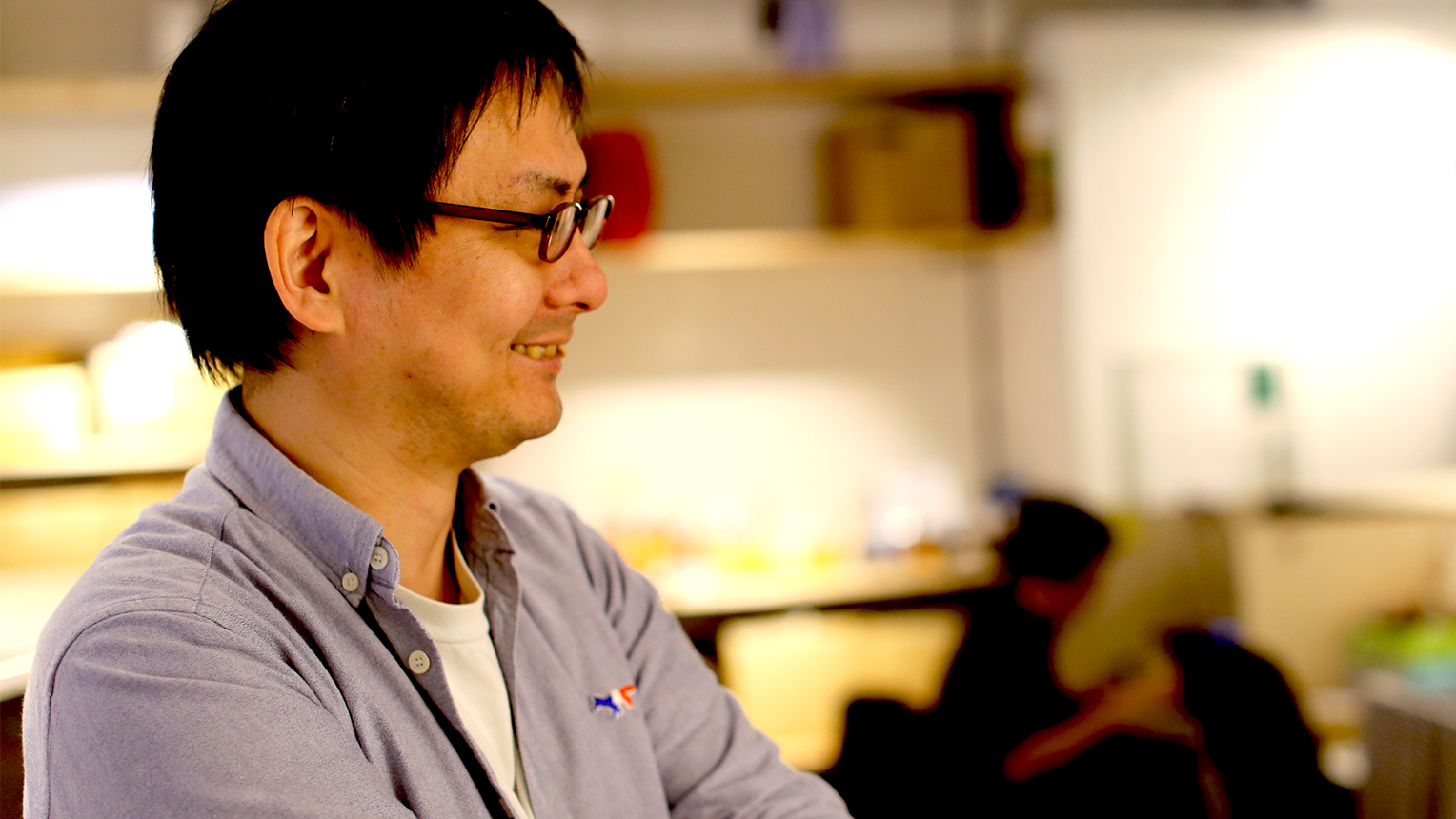
Iwasa: Also, another point is probably that it is not really a place for venture companies. Most people think of Roppongi or Shibuya when they think of venture companies, don’t they? But when we say Bakurocho or its nearest station Asakusa-bashi, and then say we are working there in IT, people always show some interest. It’s that element of surprise we were just talking about.
-What kind of partners would Shiftall like to collaborate with in the future?
Iwasa: Right, well, we would really like to work with traditional fields where the industry itself has already matured. For beer, which we worked on this time, as well as sake breweries, these have a long history with established business schemes. An industry like real estate seems interesting, too. The very fact that the industry is mature means that, if business keeps going as is, it will hit a wall in the near future. It is precisely industries like this that need technology.
-You mean that traditional industries have affinity to technology?
Iwasa: Yes, I think you could say that. I also think that, since not only the companies but the Nihonbashi area itself is also traditional, there are several things we can do from an IoT development perspective. Things like city infrastructure are very fascinating. I sense possibility in things like canals that have been here since ancient times. For example, houseboats still have a lot of room to incorporate technology. Boat companies right now all have different reservation systems, some with telephone reservations only or some where you have to go directly, but if there were a system where you could see the availability of these businesses in real time and make a reservation using an app, this alone would be a significant innovation.
Kai: Eventually, you could have automatic sailing or systems that allow passengers to board available boats midway. You could even raise the amount per customer if you take into perspective things like ride sharing. If you made riding a houseboat more casual, for example having a thirty-minute ride that’s perhaps a little pricier, it would put houseboats in the spotlight more.
In this article, we asked about Shiftall’s philosophy for creating cutting-edge products. In Part Two, we will ask about in-house company systems that combine low-tech and high-tech as well as creating office environment for a more communicative organization.
Interview/Text: Ichiro Yasui (Konel) Photographs: Tatsuya Sato (Konel)
Shiftall,Inc.
A hardware manufacturer that plans, develops, and sells a variety of electronics and gadgets created with IoT. Presenting never before seen products, such as WEAR SPACE, a wearable device that blocks the wearer’s field of vision so they can focus, and DrinkShift, a refrigerator that automatically delivers beer to your home when stock runs out.
